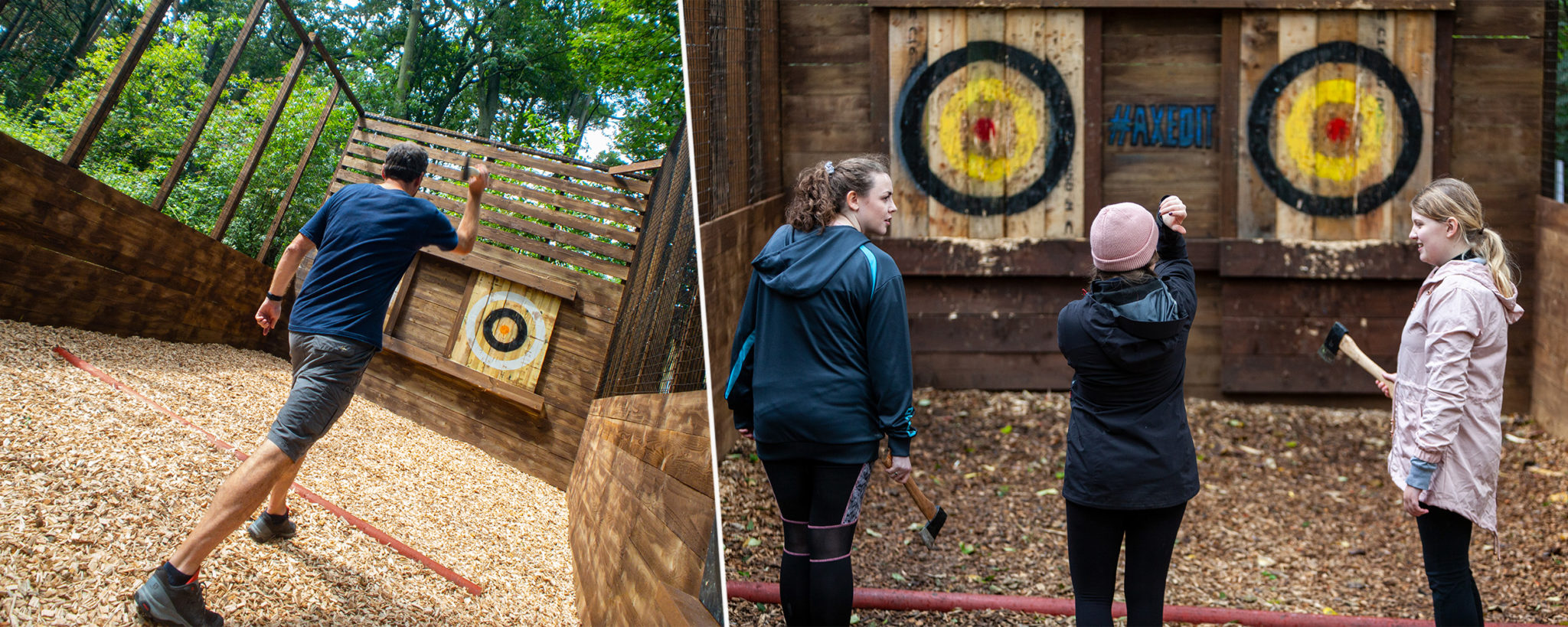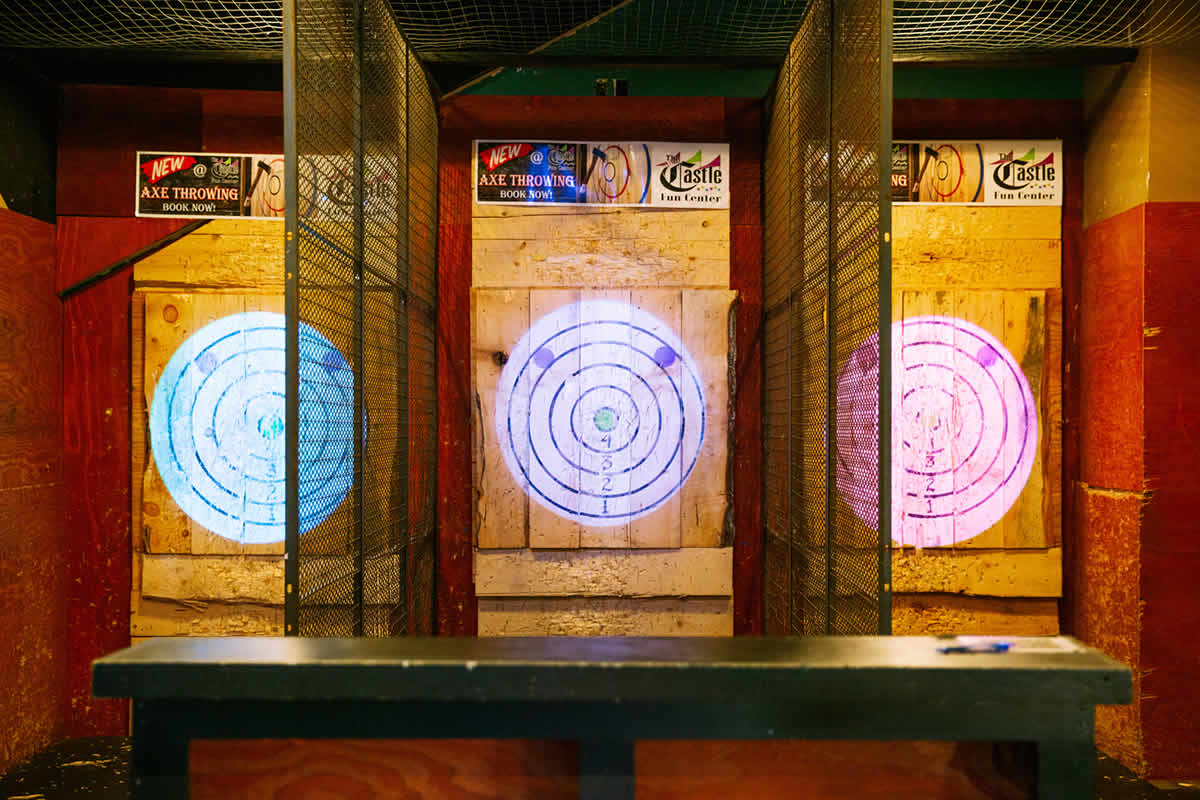The Fun of Axe Throwing: Just How This Sporting Activity Incorporates Ability and Adrenaline for a Good Time
Axe throwing has emerged as a captivating sport that masterfully links the demand for precise ability with the thrill of adrenaline, offering participants a unique and engaging experience. The act of hurling an axe towards a target requires focus and method, simultaneously promoting an atmosphere of camaraderie and pleasant competition.
The Beginnings of Axe Throwing
Axe throwing, a recreational task that has acquired significant appeal in current years, traces its origins back to ancient times. The earliest documents of axe usage in affordable contexts are found amongst the Celts and Vikings, that tossed axes for sport as well as in fight training.
Medieval European warriors, particularly during the Middle Ages, practiced axe tossing as part of their martial training. The Francisca, a kind of throwing axe utilized by the Franks, became famous for its harmful precision. This typical tool was developed to be thrown at enemy shields and armor, showcasing its dual utility in both sporting activity and battle.
In even more recent background, axe tossing saw a rebirth in the logging camps of The United States and copyright in the 19th and 20th centuries. Lumberjacks would involve in pleasant competition, examining their precision and toughness by targeting at wood targets. This evolution from a survival skill to a leisure task has actually led the way for its modern resurgence, with committed venues and leagues now commemorating the sporting activity internationally.
Devices You Need
Comprehending the abundant background of axe throwing improves the admiration of the sporting activity's contemporary model. For recreational and affordable axe tossing, the most generally used kind is the hatchet, usually evaluating between 1.25 to 2 pounds with a deal with size of about 16 inches.
Just as crucial is the target. Law targets are constructed from timber, with softwood selections like want or cottonwood being favored for their ability to hold the axe and absorb. The target is usually separated into 5 concentric circles, each with a certain point value, to facilitate rating.
Security gear, however commonly overlooked, is critical. Protective handwear covers can boost hold and prevent blisters, while closed-toed shoes are a should to protect feet from gone down axes (denver axe throwing). A well-lit, sizable throwing location, total with security obstacles, ensures a regulated environment where individuals can concentrate on refining their abilities.
Basic Techniques Explained
Grasping the fundamental strategies of axe throwing is necessary for both safety and effectiveness. The very first strategy to understand is the grip. Hold the axe with a company, yet unwinded hold, akin to holding a golf club. The leading hand should be positioned straight below the axe head, while the non-dominant hand sustains completion of the deal with.
Your dominant foot must be somewhat onward, lining up with your target. This positioning help in preserving stability and directing power accurately in the direction of the target.

Security First
Ensuring safety and security in axe throwing is extremely important to creating a satisfying and injury-free experience. A well-designed axe tossing facility functions clear separations between throwing lanes, sturdy backdrops to capture stray axes, and non-slip floor covering to protect against crashes.
Benefits of Axe Throwing
Axe throwing offers a myriad of benefits that prolong beyond simple leisure. The repetitive activity of throwing the axe likewise enhances hand-eye coordination and great electric motor abilities.
Emotionally, axe tossing needs emphasis, technique, and precision, making it an exceptional method to sharpen cognitive abilities. The focus required to hit the target can work as a type of mindfulness, allowing individuals to remove their minds and minimize stress. This psychological interaction can be particularly valuable visit site in helping people develop much better problem-solving abilities and mental strength.
Socially, axe throwing is often enjoyed in team settings, cultivating team-building and camaraderie. Whether as component of a corporate occasion or a laid-back trip with buddies, the sporting activity encourages communication and collaboration. In addition, the communal experience of discovering and enhancing together can enhance partnerships and create long lasting memories.
Verdict

The earliest records of axe usage in competitive contexts are found among the Celts and Vikings, that tossed axes for sporting activity as well as in combat training. Release the axe when your hands are about at eye level, enabling the axe's all-natural turning to direct it towards the target.
A well-designed axe throwing facility features clear separations in between tossing lanes, tough backdrops to catch stray axes, and non-slip flooring to prevent crashes. Participants need to be instructed on the right way to toss the axe and take care of, stressing managed, deliberate activities over strong tosses.
In summary, axe tossing stands out as a sporting activity that masterfully incorporates adrenaline, skill, and precision.